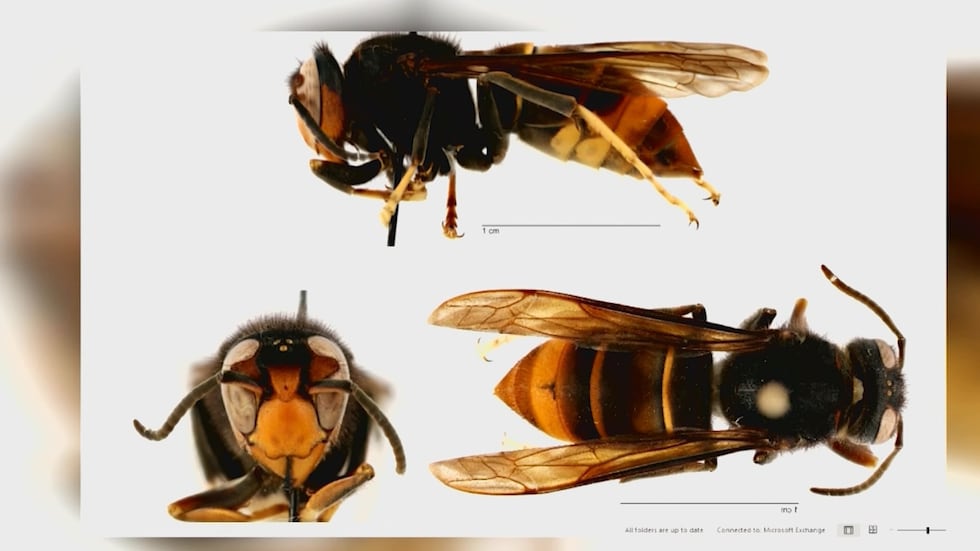Second invasive hornet’s nest in Georgia eradicated, agriculture officials say
ATLANTA, Ga. (Atlanta News First) - An invasive hornet that was recently spotted in Georgia poses a threat to the state’s honey production and native pollinators, which play a vital role in Georgia’s agriculture industry.
On Wednesday, Georgia Agriculture Commissioner Tyler Harper, in coordination with the U.S. Department of Agriculture (USDA) and the University of Georgia (UGA) announced the discovery and destruction of a second yellow-legged hornet’s nest on Wilmington Island near Savannah.
The first live detection of a yellow-legged hornet in the United States was confirmed in Georgia on Aug. 9. It was spotted by a beekeeper, who immediately notified the state.
“I am really worried about them attacking the bee population, they’re also attacking other native pollinators besides bees which is a huge threat to our agriculture out here,” said Felicia Renick with the Savannah Bee Company.
Then, on Aug. 23, a yellow-legged hornet’s nest was located and destroyed by USDA staff and pest management professionals in a residential neighborhood on Wilmington Island.
“Since the initial detection of the yellow-legged hornet in Georgia, the department’s team of dedicated professionals have been working overtime to find any additional yellow-legged hornets in our state, and thanks to their tireless work, we have eradicated a second yellow-legged hornet’s nest,” Agriculture Commissioner Tyler Harper said during a news conference in Atlanta Wednesday morning. “While this eradication is a win for our state and our agriculture industry, we’ll continue working around the clock to find any additional hornets, eradicate this invasive pest, and protect our state’s agriculture industry. The public has played a vital role in this effort, and we’re asking Georgians to continue reporting any suspected sightings directly to the Department.”
Commissioner Harper said this second nest was discovered by department staff under a bridge on Wilmington Island on Sept. 15, and it was eradicated that evening. After eradication, the nest was examined by Dr. Lewis Bartlett from the University of Georgia and Dr. Jamie Ellis from the University of Florida. They identified developing hornets within the nest and confirmed there was no evidence of the production of reproductive males or queens within the colony at the time of destruction, according to the Department of Agriculture.
This hornet is known for its method of hunting bees and other pollinators. These pollinators play a significant role in Georgia’s agriculture industry, the state’s main economic driver, so it is crucial that they are tracked and eradicated.
“This is a different type of hornet and can have detrimental impacts on our agricultural industry, which in turn translates into issues that the consumer could see in the market place,” said Harper.
Entomologists at the University of Georgia say there is no serious threat to humans, but they still don’t know how these hornets got here or if there are more out there.
“If allowed to establish in the state of Georgia and the U.S., this pest could threaten honeybee production, native pollinators, and the agricultural industry of the state of Georgia,” says Harper. “If a colony is discovered through trapping, tracking, or reporting, it will be eradicated.”
As they continue their efforts to eradicate the yellow-legged hornet from Georgia, the Department of Agriculture is again asking the public to report any suspected sightings using this form.
“We need them to keep reporting, to keep looking, to keep trapping, and report that, so we can continue to find where they are,” said Dr. Tim Davis, with UGA.
Testing has revealed the hornets have Asian origins, but it is not completely clear how they got to Georgia.
“The port is in Savannah, so it’s its very likely that’s the method of transportation of how they got here, but we have confirmed they did come from Asia,” said Harper.

Copyright 2023 WANF. All rights reserved.














